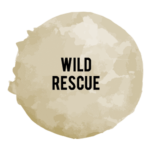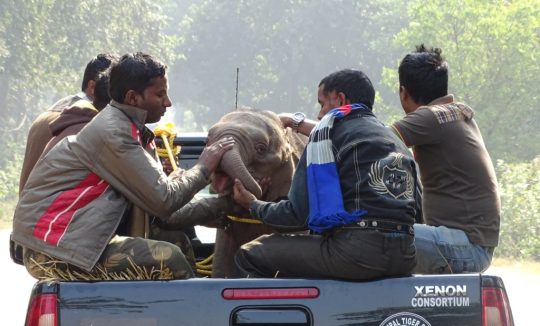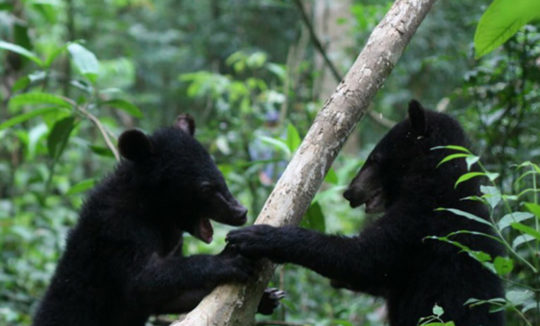Project Info
Project Description
CWRC IS THE ONLY FACILITY IN INDIA where orphaned and/or injured wild animals of several species are hand-raised and/or treated and subsequently returned to the wild. Strategically located in Borjuri village adjacent to the Panbari Reserve Forest near Kaziranga National Park in Assam, the centre attends to a wide range of wildlife emergencies resulting from natural or anthropogenic causes. Since its establishment in 2002, the centre has handled over 5000 animal cases, with nearly 60% released back to the wild.
Kaziranga National Park in the northeast Indian state of Assam is a world heritage site, notified by UNESCO in 1985. The park holds the world’s largest population of the greater one-horned rhinoceros and provides refuge to a large number of wild animals including the endangered Bengal tiger and Asian elephant.
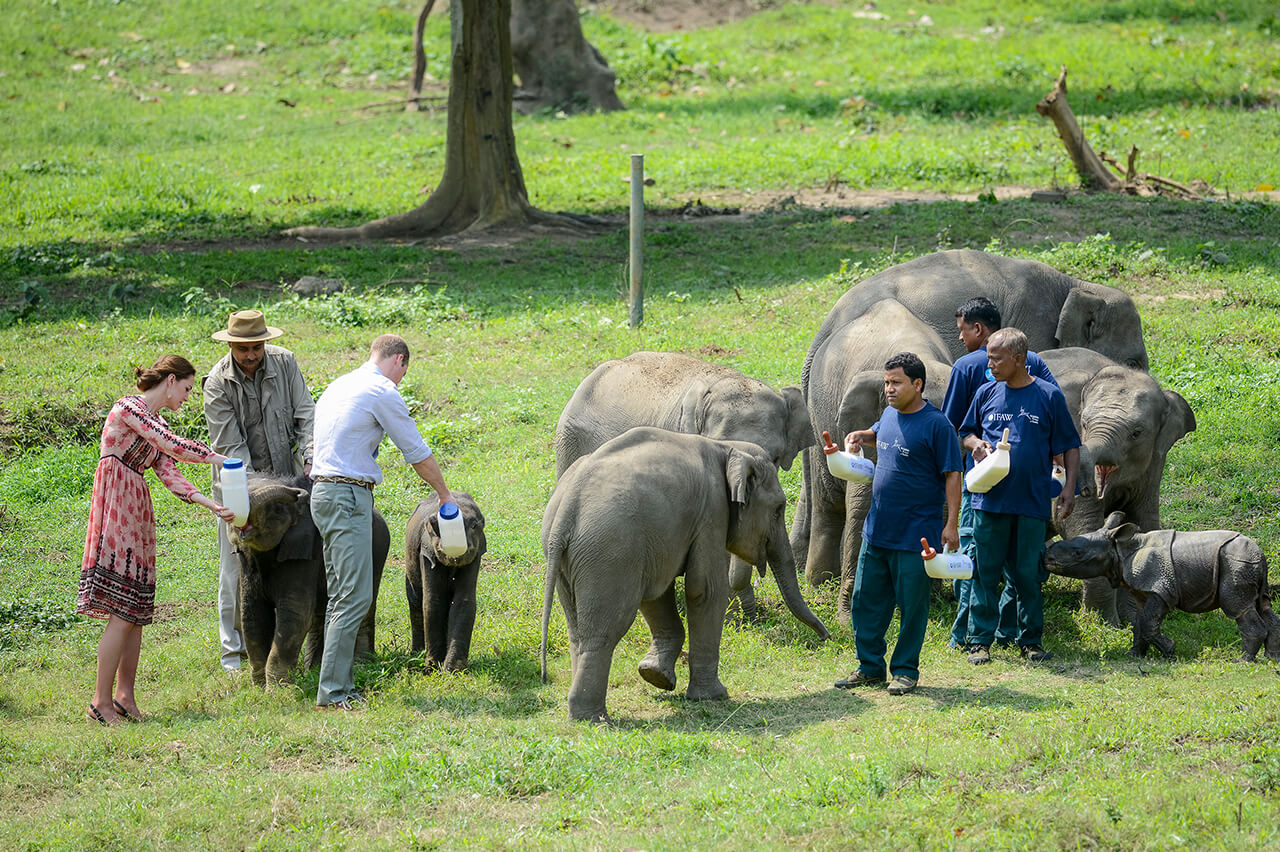
Their Royal Highnesses the Duke and Duchess of Cambridge with WTI CEO Vivek Menon and IFAW President & CEO Azzedine Downes during a visit to CWRC in April 2016.
Flanked by the Brahmaputra river towards its north, Kaziranga lies in the river’s flood plain and experiences annual flooding during monsoon. Although these annual inundations play a significant role in maintaining the fertility of the habitat, they also regularly cause large-scale temporary displacement of wild animals.
With an average altitude of 60m, the park offers very little escape for animals during the floods. Although man-made highlands offer some relief to animals, many get washed away. Animals also get displaced in their attempt to escape to higher ground, with young ones who are unable to keep pace with their parents often getting left behind.
Beyond the park boundary, displaced animals are susceptible to conflict with humans and sometimes fall prey to poachers. Many also fall victim to road accidents, especially along NH-37 which separates Kaziranga’s low-lying flooded grasslands from the wooded highlands of the Karbi Anglong hills to the south. Displacements also arise from conflict with humans and animals being stranded in human-modified environments.

The milk-dependent animals are hand-raised by the CWRC team
CWRC predominantly aims to stabilize displaced animals and release them back into the wild, as close to the site of rescue as possible, following necessary treatment. The centre follows accepted international protocols and guidelines during the rescue, treatment and rehabilitation of displaced or distressed animals.
The animal care duties at the centre are handled by two wildlife veterinarians with the assistance of several animal keepers who are trained to handle wild animals. It has essential veterinary infrastructure including an examination clinic, a surgery theatre and an evolving preliminary disease investigation laboratory. It also has spacious holding shelters for birds, reptiles, ungulates and primates, enclosures for big cats and nurseries and outdoor paddocks for mega-herbivores such as elephants and rhinos.
While most animals brought to CWRC are temporarily displaced, a number of them require long-term acclimatisation for rehabilitation or even lifetime care.
A Mobile Veterinary Service (MVS) comprising an all-terrain vehicle equipped with necessary medical supplies to attend to wildlife emergencies is also stationed at CWRC. A vital component of the centre, the MVS unit helps reach in-situ medical aid to stranded, displaced, or distressed animals. This is in addition to its role as an ambulance facilitating the movement of animals to the centre or back to the wild.
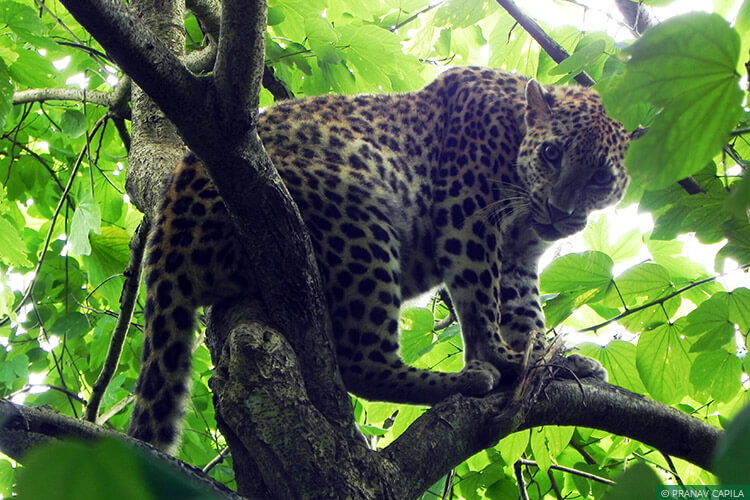
One of three rescued leopard cubs currently housed at CWRC; was brought to the centre when they were less than nine days old.
While most animals brought to CWRC are temporarily displaced, a number of them require long-term acclimatization for rehabilitation or even lifetime care. This category includes young individuals who are hand-raised for several years at CWRC and relocated to a suitable site for acclimatisation and subsequent release into the wild.
As a rule, with young individuals, attempts (some lasting for weeks) are made to reunite them with their mothers, before they are considered subjects for long-term rehabilitation. Several displaced elephant calves have been reunited with their natal herds soon after separation. CWRC has played host to several young animals notably orphaned rhinos, elephants, tigers, leopards, Asiatic black bears, badgers, jungle cats, leopard cats, owls etc. A number of these animals have been successfully hand-raised and rehabilitated back in the wild. Post-release monitoring of rehabilitated individuals belonging to key species is facilitated by radio transmitters fitted on collars.
A joint venture between Wildlife Trust of India (WTI), the International Fund for Animal Welfare (IFAW) and the Assam Forest Department, CWRC was constructed with the support of the Animal Welfare Division, Government of India. It is recognised by the Centre Zoo Authority (CZA).
Scientific Publications:
- Challenges faced in rehabilitating orphaned leopard cats (Prionailurus bengalensis) in Western Assam
- Surgical management of olecranon bursitis in four hand-raised golden jackals (Canis aureus)
- Rehabilitation of Greater one-horned rhinoceros (Rhinoceros unicorns) in Manas National Park, Assam
PARTNERS: Assam Forest Department, IFAW
PROJECT LEAD: Dr. Bhaskar Choudhury
